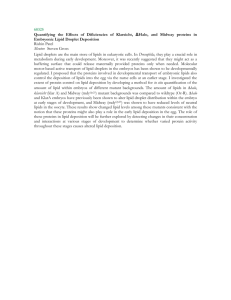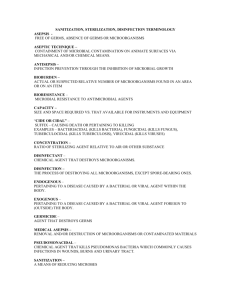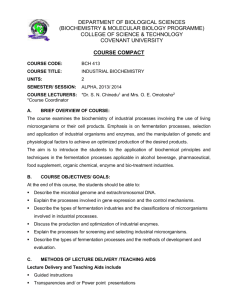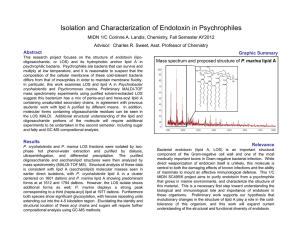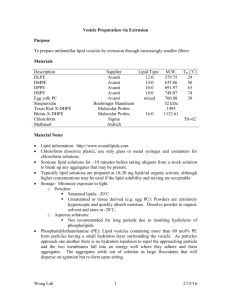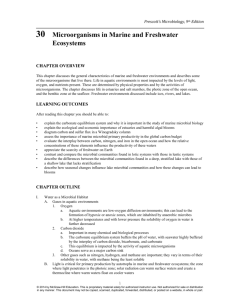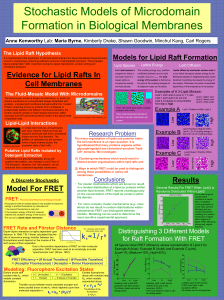Integrating community proteogenomics and lipid biogeochemistry to
advertisement
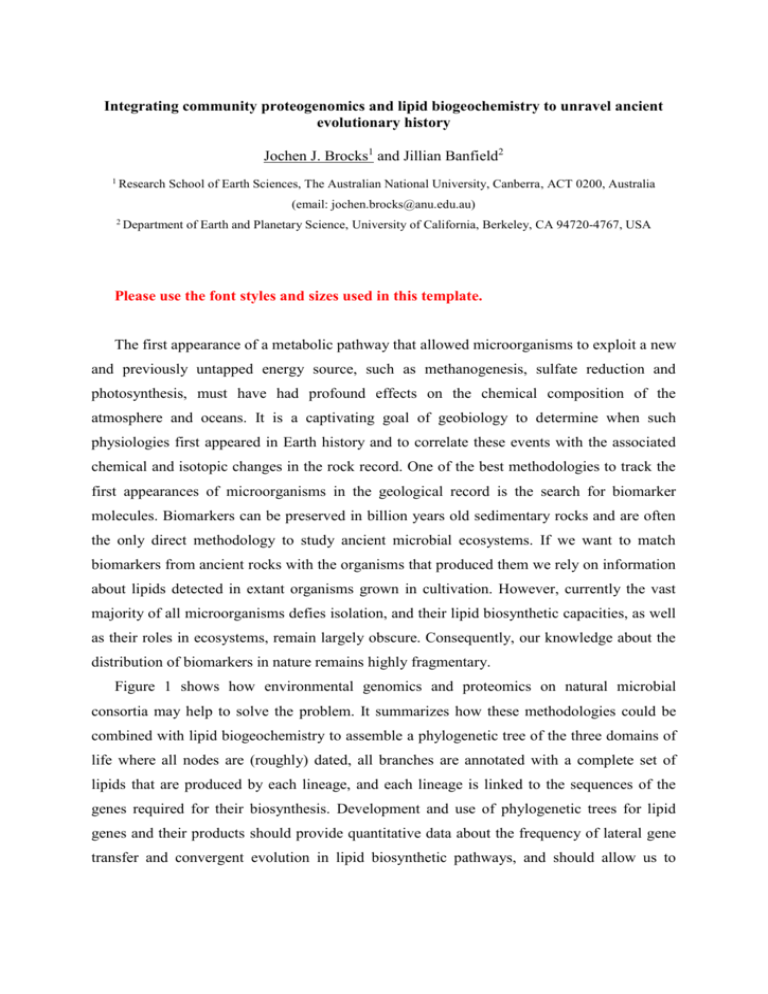
Integrating community proteogenomics and lipid biogeochemistry to unravel ancient evolutionary history Jochen J. Brocks1 and Jillian Banfield2 1 Research School of Earth Sciences, The Australian National University, Canberra, ACT 0200, Australia (email: jochen.brocks@anu.edu.au) 2 Department of Earth and Planetary Science, University of California, Berkeley, CA 94720-4767, USA Please use the font styles and sizes used in this template. The first appearance of a metabolic pathway that allowed microorganisms to exploit a new and previously untapped energy source, such as methanogenesis, sulfate reduction and photosynthesis, must have had profound effects on the chemical composition of the atmosphere and oceans. It is a captivating goal of geobiology to determine when such physiologies first appeared in Earth history and to correlate these events with the associated chemical and isotopic changes in the rock record. One of the best methodologies to track the first appearances of microorganisms in the geological record is the search for biomarker molecules. Biomarkers can be preserved in billion years old sedimentary rocks and are often the only direct methodology to study ancient microbial ecosystems. If we want to match biomarkers from ancient rocks with the organisms that produced them we rely on information about lipids detected in extant organisms grown in cultivation. However, currently the vast majority of all microorganisms defies isolation, and their lipid biosynthetic capacities, as well as their roles in ecosystems, remain largely obscure. Consequently, our knowledge about the distribution of biomarkers in nature remains highly fragmentary. Figure 1 shows how environmental genomics and proteomics on natural microbial consortia may help to solve the problem. It summarizes how these methodologies could be combined with lipid biogeochemistry to assemble a phylogenetic tree of the three domains of life where all nodes are (roughly) dated, all branches are annotated with a complete set of lipids that are produced by each lineage, and each lineage is linked to the sequences of the genes required for their biosynthesis. Development and use of phylogenetic trees for lipid genes and their products should provide quantitative data about the frequency of lateral gene transfer and convergent evolution in lipid biosynthetic pathways, and should allow us to determine a level of confidence with which a biomarker from a well-dated ancient rock can be assigned to a particular biological origin. Figure 1. There is no restriction in space for figures, as long as you stick to a total of 2 pages. Table 1. Tables can be added as well, of course. For references, we recommend Geochimica style in 10 font with titles in italics and volume in bold: Peters K. E., Walters C. C., and Moldowan J. M. (2004) The Biomarker Guide. Cambridge University Press. Ram R. J., Verberkmoes N. C., Thelen M. P., Tyson G. W., Baker B. J., Blake R. C., Ii, Shah M., Hettich R. L., and Banfield J. F. (2005) Community proteomics of a natural microbial biofilm. Science 308, 1915-1920. Tyson G. W., Chapman J., Hugenholtz P., Allen E. E., Ram R. J., Richardson P. M., Solovyev V. V., Rubin E. M., Rokhsar D. S., and Banfield J. F. (2004) Community structure and metabolism through reconstruction of microbial genomes from the environment. Nature 428, 37-43.




